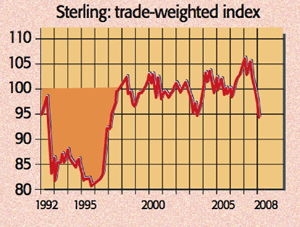
“Fear and loathing are spreading globally,” said Ian Campbell on Breakingviews. Cash-strapped banks wary of lending to each other requested almost five times as much money as the £5bn of short-term loans the Bank of England was auctioning off on Monday, and have continued to make credit pricier and rarer.
Rates on a £1,000 personal loan have risen by more than 4% since before the crunch and mortgage lenders are scrambling to withdraw products or tighten their terms.
Halifax has increased the rates on some of its trackers by 0.3% and Scottish Widows has pulled its two- and three-year fixed mortgages, as well as its buy-to-let range. According to the Bank of England, the rates on two-year fixes have risen to the highest level since 2000. In further bad news for the housing market, the number of first-time buyers has fallen to a record low, according to the Council of Mortgage Lenders.
What next?
Lending cutbacks and the sagging housing market bode ill for consumption and growth. But with inflation at a nine-month high of 2.5% and set to rise further, due to food and energy prices, the Bank of England has scant scope to bring interest rates down quickly in an attempt to shore up growth.
Another complication on the inflation front is sterling, which this week posted its biggest one-day fall since the ERM crisis in 1992 and hit a record low of almost 80p to the euro. On a trade-weighted basis it is at an eleven-year low. The immediate problem is that a third of UK growth stemmed from banking and financial services over the past few years, rendering Britain highly exposed to the financial crisis.
But the similarities with the US don’t help either: we have even higher personal debt levels, the same housing bubble, and a current-account deficit nearly as big. It seems the forex market has finally noticed.